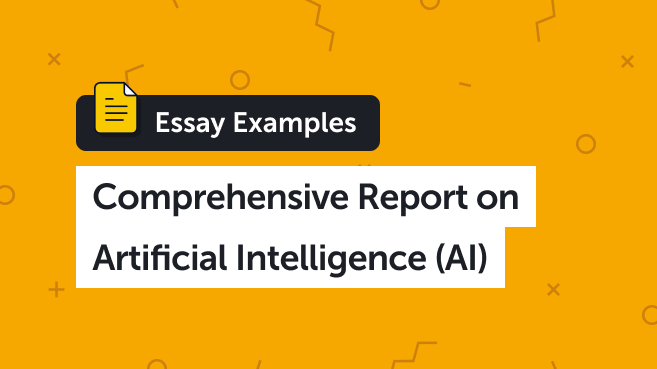Comprehensive Report on Artificial Intelligence


Executive Summary
This report provides an exhaustive exploration of Artificial Intelligence (AI). Beginning with a lucid introduction and definition, we examine AI’s core components, benefits, and drawbacks. The challenges of AI implementation and factors pivotal to its success are subsequently discussed. Various AI applications across diverse sectors are highlighted, followed by a discerning discourse on its future prospects.
Introduction and Definition
Artificial Intelligence, colloquially known as AI, stands as a testament to human innovation. At its essence, AI is a branch of computer science that aims to create machines that can mimic cognitive human functions such as problem-solving, learning, and decision-making. In the ever-evolving digital age, AI’s significance is paramount, offering solutions and enhancements in realms previously considered beyond automation.
Components of AI
- Devices/Sensors: These are the initial touchpoints, gathering raw data essential for any AI system. From cameras to temperature sensors, they provide the crucial input.
- Connectivity Protocols: These ensure seamless communication between devices and the central system. Protocols like MQTT and CoAP are popular choices.
- Data Processing: Before any actionable insights can be derived, raw data must be processed, cleaned, and structured, often through robust algorithms.
- Cloud Infrastructure: Once processed, data needs storage. Cloud infrastructures not only store this data but also host applications that act upon this data to produce AI-driven results.
Advantages and Disadvantages of AI
Advantages include:
- Enhanced efficiency, allowing for tasks to be executed at unprecedented speeds.
- Remarkable convenience, as AI-driven devices can anticipate needs and make recommendations.
- Profound, data-driven insights, which can lead to better decision-making.
Disadvantages encompass:
- Security vulnerabilities, given the vast amounts of data AI systems handle.
- Privacy issues, with fears of personal data misuse or unauthorized access.
Detailed Challenges with AI
Implementing AI isn’t without its pitfalls. Among these challenges are:
- Security Vulnerabilities: As AI systems become integral in sectors like finance or healthcare, they become lucrative targets for cyber-attacks.
- Interoperability Issues: With a myriad of devices and systems, ensuring they communicate seamlessly is challenging.
- Scalability Concerns: As businesses grow, their AI systems must scale accordingly, which isn’t always straightforward.
- Regulatory Hurdles: The evolving nature of AI means that regulation often struggles to keep pace, leading to potential legal gray areas.
List of Important Success Factors
For AI projects to truly thrive, certain elements are paramount:
- Robust Security Measures: Given the inherent vulnerabilities, stringent security is non-negotiable.
- Standardization: This ensures smooth integration and scalability in the long run.
- Effective Data Management: Quality insights require quality data, necessitating efficient data management systems.
- User-friendly Interfaces: For widespread adoption, interfaces must be intuitive, ensuring users can harness AI’s power without steep learning curves.
Applications of AI
Across the board, AI’s transformative touch is evident:
- Healthcare: From diagnosis assistance to patient management, AI’s influence is undeniable.
- Transportation: Autonomous vehicles and optimized route planning are just the tip of the iceberg.
- Agriculture: AI-driven solutions help in predicting crop yields and optimizing irrigation.
- Smart Cities: From traffic management to utility optimization, AI holds the key.
- Industrial Automation: Processes have become more streamlined, efficient, and safer thanks to AI.
Discussion and Conclusion
AI’s potential is vast, with its capability to revolutionize industries and overhaul conventional processes. However, its challenges, from security to regulatory, are significant roadblocks. To harness AI’s full potential, a holistic approach, considering its advantages, challenges, and necessary success factors, is imperative. As we gaze ahead, there’s no doubt that AI’s imprint will only deepen, making understanding and adaptation critical.